Welcome To TrumpLand, The Artist Colony Formerly Known As Greenland
But Panama Not Such A Good Idea
When I wrote my original DOGE proposal for Elon Musk six weeks ago, proposing that the United States Government move the Border Agencies to the Nevada Desert, I had no idea Greenland might be an option.
My argument was that it would be quicker to terraform Nevada than it would be to terraform Mars. Terraforming is shaping the environment to support human life.
Who knew my proposal would be perfect for President-Elect Donald Trump’s ambitions to buy Greenland for the United States? Here’s the original Nevada proposal, but you can see how easily it can be applied to Greenland.
Musk Wants To Nuke TerraForm Mars, We Can Do That In Nevada For A Faster ROI
Elon Musk’s plan to colonize Mars requires exploding nuclear missiles above the Martian polar ice caps to release carbon dioxide and water into the “air” in hopes it forms an atmosphere.
Well, not that President-elect Donald Trump is interested in another vast wasteland called Greenland, but I would like to modify the proposal. However, the argument remains the same: terraforming Greenland will be way cheaper than Mars and will return a profit immediately.
In early November, after Trump’s Election victory, I outlined how nuclear SMR (Small Modular Reactors) reactors could quickly be set up to power large AI data centers in the Nevada desert because the land was already a nuclear test area. I didn’t factor in the possibility of Greenland, which would be far better for AI data centers and Bitcoin mining, given its cold climate and close proximity to Europe.
The biggest benefit of Trump’s Greenland Plan over my Nevada plan is that the colder the climate, the better it is for AI data centers that generate massive heat to perform compute-intensive tasks like creating the AI pictures in this article.
New computer-intensive data centers pay 30% of their expenses just to cool their servers, even in the coldest climate.
My plan also overcame the challenge of quickly gaining power for the data center using SMRs, which are Small Nuclear Reactors.
The floating SMRs would be much larger than small rafts, but you get the idea that the new city of Cape Farewell would quickly be up to speed with power.
The United States, no matter where you want to add nuclear power, has the problem of bureaucratic delay with atomic regulation.
We reported that Bill Taylor, the father of one of the key conspirators in the first Trump Impeachment, had a father who designed these floating reactors at Ft. Belvoir after World War II.
Another another current DARPA Billionaire, Jeff Bezos, had a grandfather who approved the floating reactor design.
So Elon Musk, Peter Thiel, and David Sacks of the new Trump Administration should be very familiar with the floating reactor design.
Fast, pop-up SMRs also have the problem in the United States of NIMBY - not in my backyard. However, if Denmark decided to sell it to the US, Greenland would certainly not be in anyone’s backyard.
We can only assume the approval cycle would be much faster in Greenland, er, I mean TrumpLand.
Before I wrote the November Plan for DOGE, there were floating SMB reactor and floating data center proposals where not one spoonful of the earth is turned on land, so no one’s backyard is affected. Presumably, jobs would be created to build floating data centers and reactors on the East Coast of the US, with the rest of the country filling the data centers with chips and servers and Cold War missile uranium to fire the reactors.
Greenland has basically three Icelands at Iceland’s latitude or south.
Below is a rough, “back-of-the-envelope” way to estimate how much of Greenland lies south of 63.4°N. Please note that because Greenland narrows significantly toward its southern tip, this method will almost certainly overestimate the area; however, it gives a ballpark figure.
1. Latitude ranges
Greenland extends from about 59.8°N at its southern tip (Cape Farewell) to about 83.6°N at its northernmost point (Cape Morris Jesup).
Total latitudinal span: 83.6°N − 59.8°N = 23.8°
We want the portion below 63.4°N (i.e., from 59.8°N up to 63.4°N).
Southern latitude band: 63.4°N − 59.8°N = 3.6°
2. Fraction of latitude
If we (very) crudely assume Greenland’s area is evenly distributed by latitude (which it is not), then the fraction of its total area in that 3.6° band would be:
3.6∘23.8∘ ≈ 15%\frac{3.6^\circ}{23.8^\circ} \;\approx\; 15\%23.8∘3.6∘≈15%
3. Applying that fraction to Greenland’s total area
Greenland’s total area (land + ice-covered) is roughly 2.16 million km². Taking 15% of that:
2,160,000×0.15 ≈ 324,000 km22{,}160{,}000 \times 0.15 \;\approx\; 324{,}000\;\text{km}^22,160,000×0.15≈324,000km2
4. Important caveats
Greenland narrows in the south. Because the island’s coastline tapers toward Cape Farewell, the true area south of 63.4°N is likely smaller than the raw 15% slice implies.
Ice vs. ice-free land: Greenland’s ice sheet is extensive and complicates any simple “by-latitude” calculation.
Coarse method: A more precise calculation would require integrating the actual shape of Greenland rather than slicing purely by latitude.
Short answer (very rough estimate)
If you simply slice by latitude, about 15% of Greenland’s total area—on the order of 300,000 km²—lies below 63.4°N. However, because Greenland is narrower in the south, the true area in that zone is likely somewhat less than 300,000 km² in reality.
So, Trump would basically be buying three Icelands that are usable for human habitation, although there are arguments for going north of there. Trump could also conceivably pull back NATO bases in England.
Of course, the biggest question about Greenland versus basing AI server farms in the United States is: will Trump and Musk get DOGE volunteers to go to Greenland?
Will Trump Pull NATO Bases Back To Greenland?
England (UK)
In England (as well as in other parts of the UK), there are multiple Royal Air Force (RAF) stations that host permanent or semi-permanent U.S. forces under U.S.–UK agreements. Although often informally called “U.S. bases,” they are legally RAF stations made available to U.S. Visiting Forces. Major examples include:
RAF Lakenheath – Home to the U.S. Air Force’s 48th Fighter Wing (F-15s and incoming F-35s).
RAF Mildenhall – Hosts the 100th Air Refueling Wing, 352nd Special Operations Wing, and other units.
RAF Alconbury & RAF Molesworth – Smaller USAF sites for intelligence and support (501st Combat Support Wing staff, Joint Analysis Center at Molesworth).
RAF Fairford – A standby bomber forward operating location for the U.S. Air Force.
RAF Croughton – A key U.S. communications hub.
RAF Menwith Hill (in northern England) – A U.S.–UK intelligence and communications site administratively run by the UK’s Ministry of Defence but heavily used by U.S. agencies.
Depending on how you count “bases” versus “support sites,” there are roughly 6–7 main installations in England with a continuous, significant U.S. presence. All operate under NATO and bilateral defense agreements but are still legally UK bases (RAF stations).
Trump could also establish missile bases closer to Russia as in the Cold War days with the old BOMARC Missile System.
Historical BOMARC Missile Sites
CFB North Bay (Ontario)
RCAF Station La Macaza (Quebec)
These sites hosted BOMARC surface-to-air missiles under a joint U.S.–Canada agreement (as part of North American air defense measures). The missiles were nuclear-capable, but the program ended in 1972.
Current Status
No operational missile bases are active in Canada today.
Finally, and most controversially, Elon Musk's underground world of HyperLoops and Tesla could find a home like Cape Farewell, where keeping above-ground roads open through long winters would be difficult.
And then, of course, there are the mineral and oil extraction possibilities. In recent years, Norway and England have survived on North Sea oil and gas finds.
1. Norway
A significant contributor to GDP
Historically, oil and gas has accounted for anywhere from 15–25% of Norway’s GDP. In recent years (2020–2023), it has often been around 17–20%.
In 2022, amid high global energy prices, the petroleum sector’s share rose, highlighting Norway’s continuing reliance on its offshore fields in the North Sea and the Norwegian Sea.
Major export earner
Oil and gas exports constitute a large share of Norway’s total exports—often over 50% (and sometimes exceeding 60% during high-price periods).
Norway is Europe’s largest producer of oil and natural gas outside of Russia, making it a critical supplier for the continent.
Government revenues & sovereign wealth fund
A considerable portion of Norway’s government revenue (ranging roughly 15–25% in recent years) derives directly from the petroleum sector (taxes, royalties, licensing).
Norway channels surplus oil and gas revenues into its Government Pension Fund Global (often called the Oil Fund), now one of the largest sovereign wealth funds in the world.
This fiscal strategy both buffers Norway’s economy from the volatility of oil and gas prices and provides long-term financial security.
Norway is highly reliant on oil and gas from the North Sea (and broader offshore), although it has used revenues to diversify its economy and invest globally.
2. The United Kingdom (with emphasis on England)
Smaller share of GDP relative to Norway
At its peak in the early 1980s, UK oil and gas production was a more substantial slice of the national economy—up to ~2–3% of GDP.
Today, that share is significantly lower (often 1% or below), reflecting both declining North Sea production and the UK’s more diverse economic base.
Production primarily offshore Scotland
The largest fields lie in the waters northeast of Scotland (the “UK Continental Shelf”).
While often colloquially associated with “North Sea Oil,” the main operations are off Scottish shores; however, revenues flow to the UK central government (in London), which redistributes them as part of overall UK finances.
Employment and energy security
The UK's offshore industry supports hundreds of thousands of jobs (direct and indirect), though the exact number varies depending on market conditions.
Domestically produced oil and gas help reduce (but do not eliminate) reliance on imports, contributing to energy security.
Government revenues
North Sea tax revenues for the UK have fluctuated over time. In some boom years (like early 1980s and mid-2000s), they were a noticeable budget line. In many recent years, revenues declined amid lower production and tax allowances.
As of 2022–2023, however, higher energy prices led to a short-term bump in revenues, though still far below what Norway collects proportionately.
In short, the UK still benefits economically from the North Sea, but oil and gas play a much smaller role in overall GDP and government income today than they do in Norway (and much less than they once did for the UK itself in earlier decades).
The Trump Card
And, of course, Trump could always play the Trump Card - NATO. Give me Denmark for back NATO debt, or we are pulling out of NATO.
Trump has all the cards and chips regarding European NATO discussions.
Trump could easily say, “No Greenland, No NATO.” And Trump has appointed one of Elon Musk’s old PayPal Mafia friends, Ken Howery, as Ambassdor to Denmark. The PayPal Mafia of Peter Thiel, David Sacks, Elon Musk, and Ken Howery may be ready to flex their muscles in TrumpLand (er, I mean Greenland).
https://www.science.org/content/article/trump-s-pick-ai-czar-signals-support-science-advisory-panel
Trump’s creating a stir over the Panama Canal cannot be taken seriously, in my opinion. The Panama Canal was strategic in Teddy Roosevelt’s time, not so much now, with the Ports of San Diego, Los Angeles, San Francisco, Portland, and Seattle all ready to fire into higher gear if the rates go too high at the Panama Canal. With new Intermodal train lines connecting to West Coast Ports, the old threat of a Panama Canal blockade has gone the way of the Merrimack and the Monitor.
On the other hand, Greenland could be a $Green Land$ for Musk and other PayPal Mafia entrepreneurs, American chip foundries and server manufacturers.
And maybe we will find that missing Russian uranium from Piketon, Ohio.









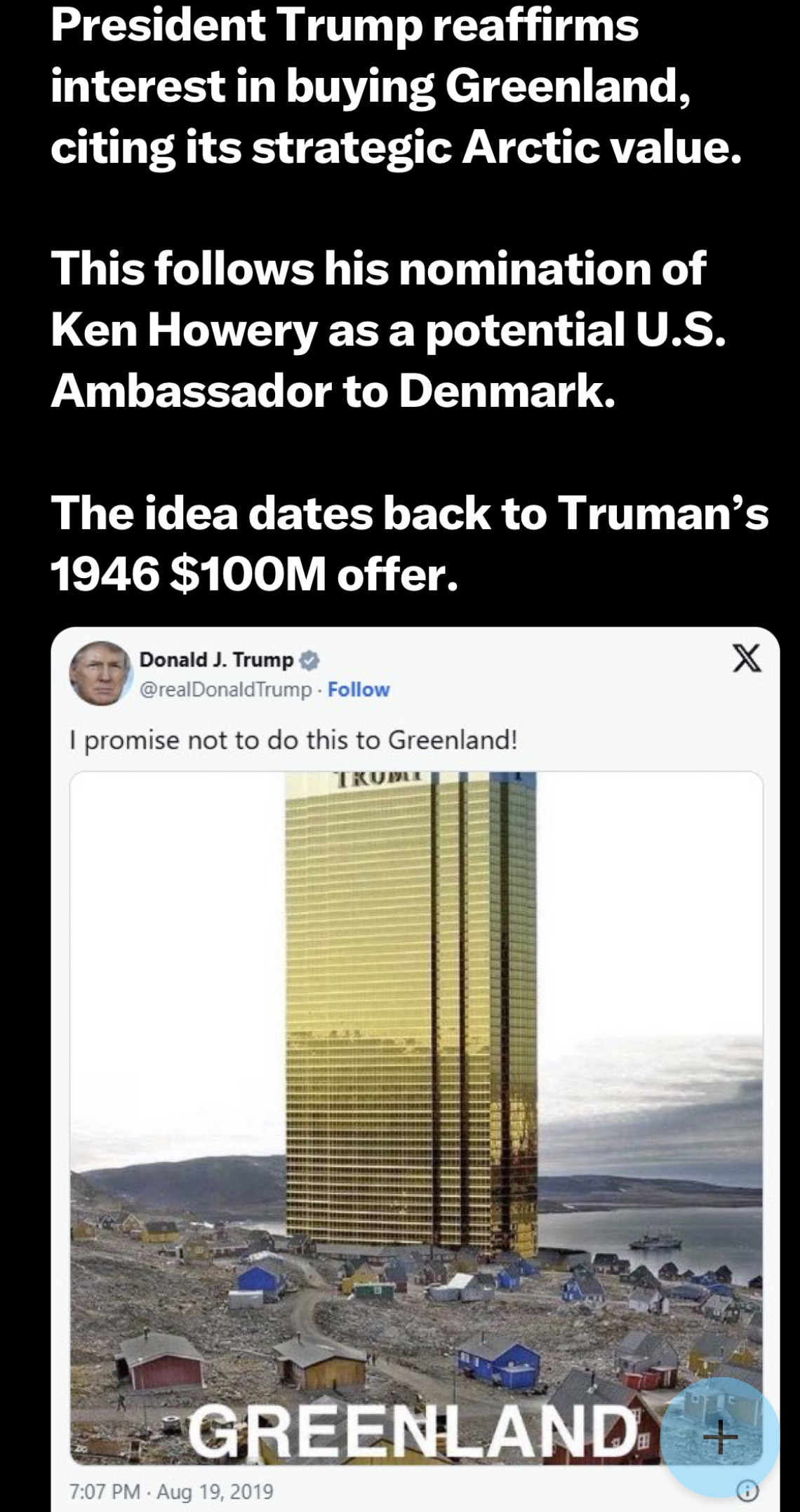




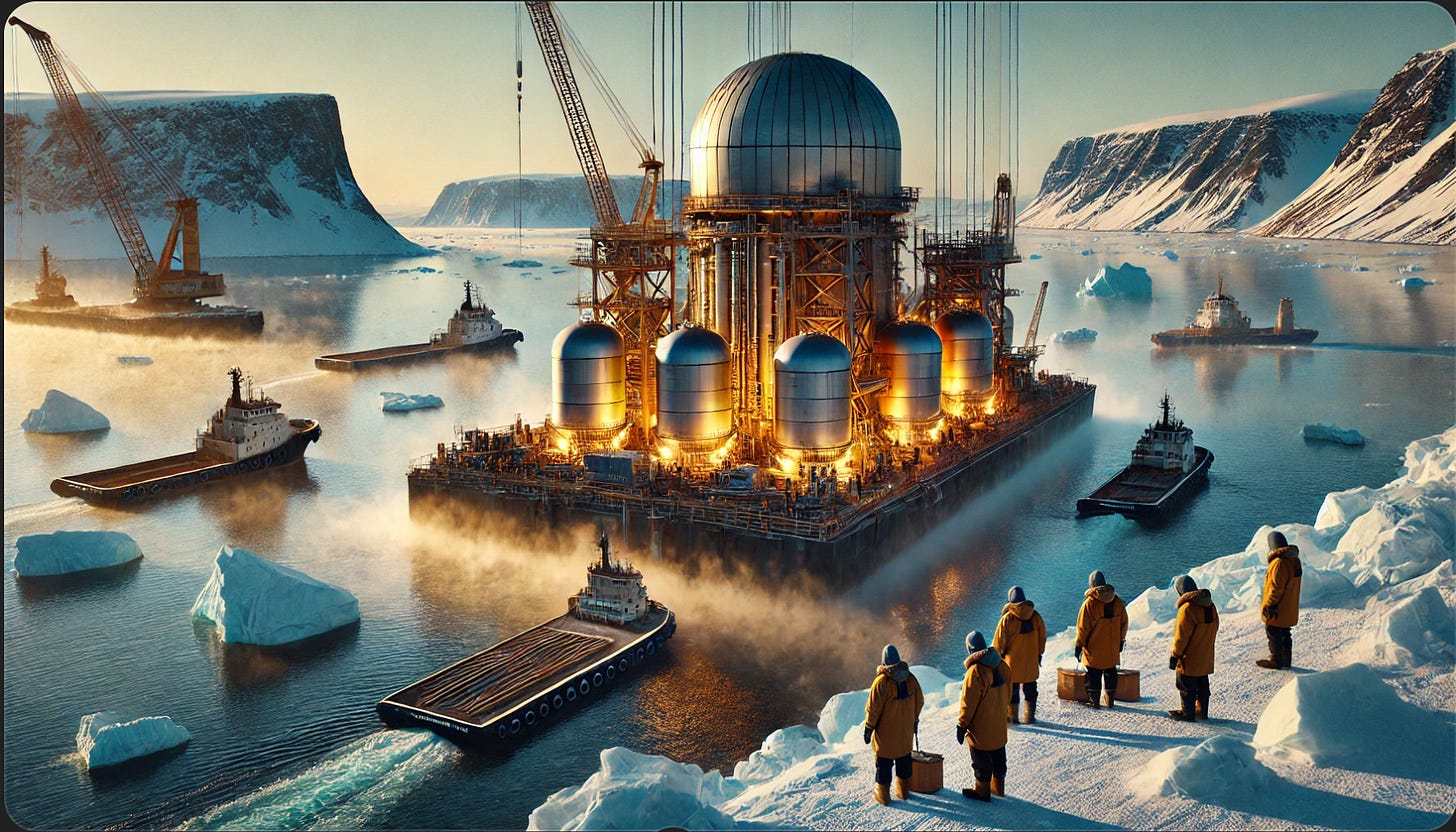
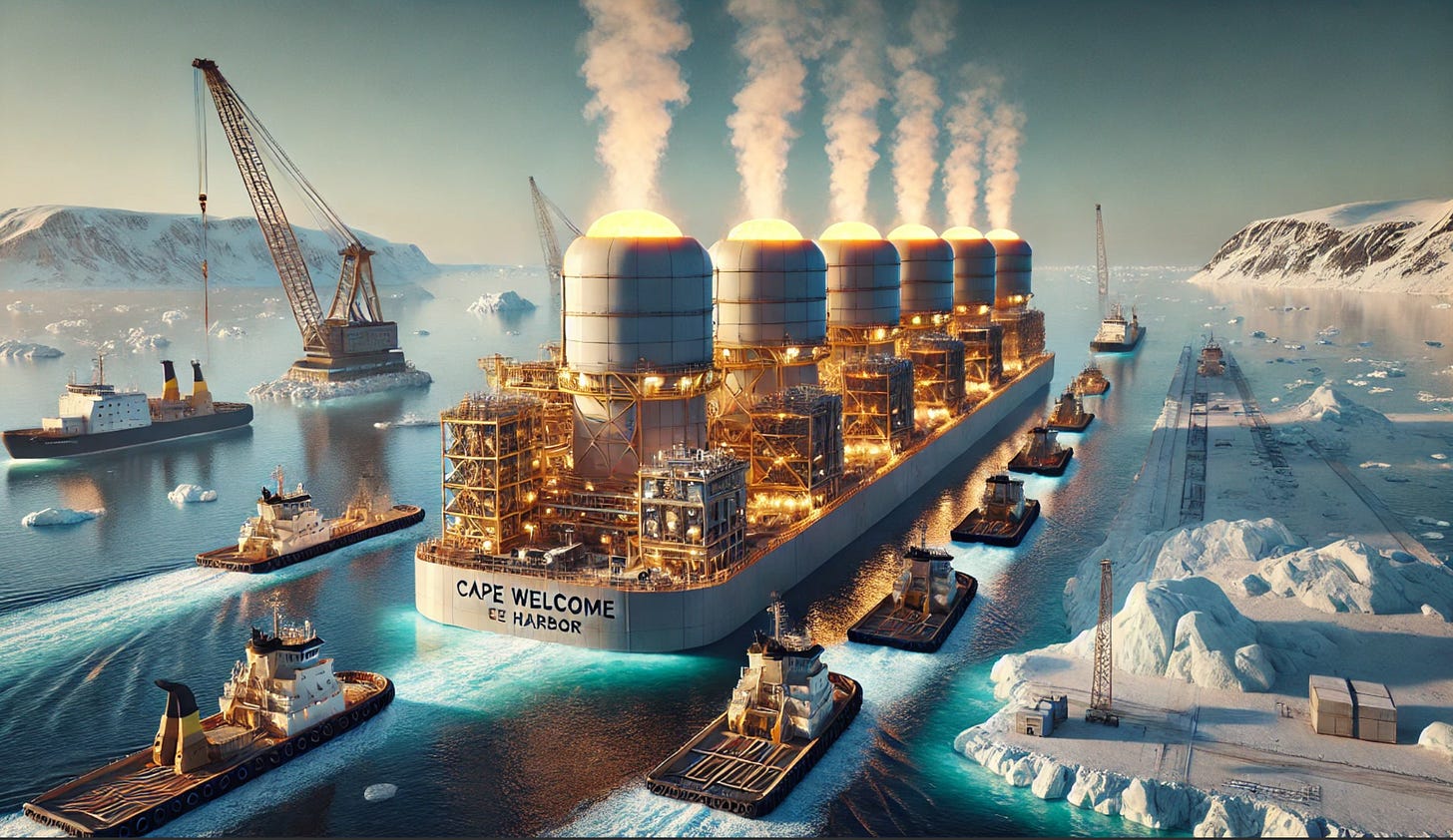





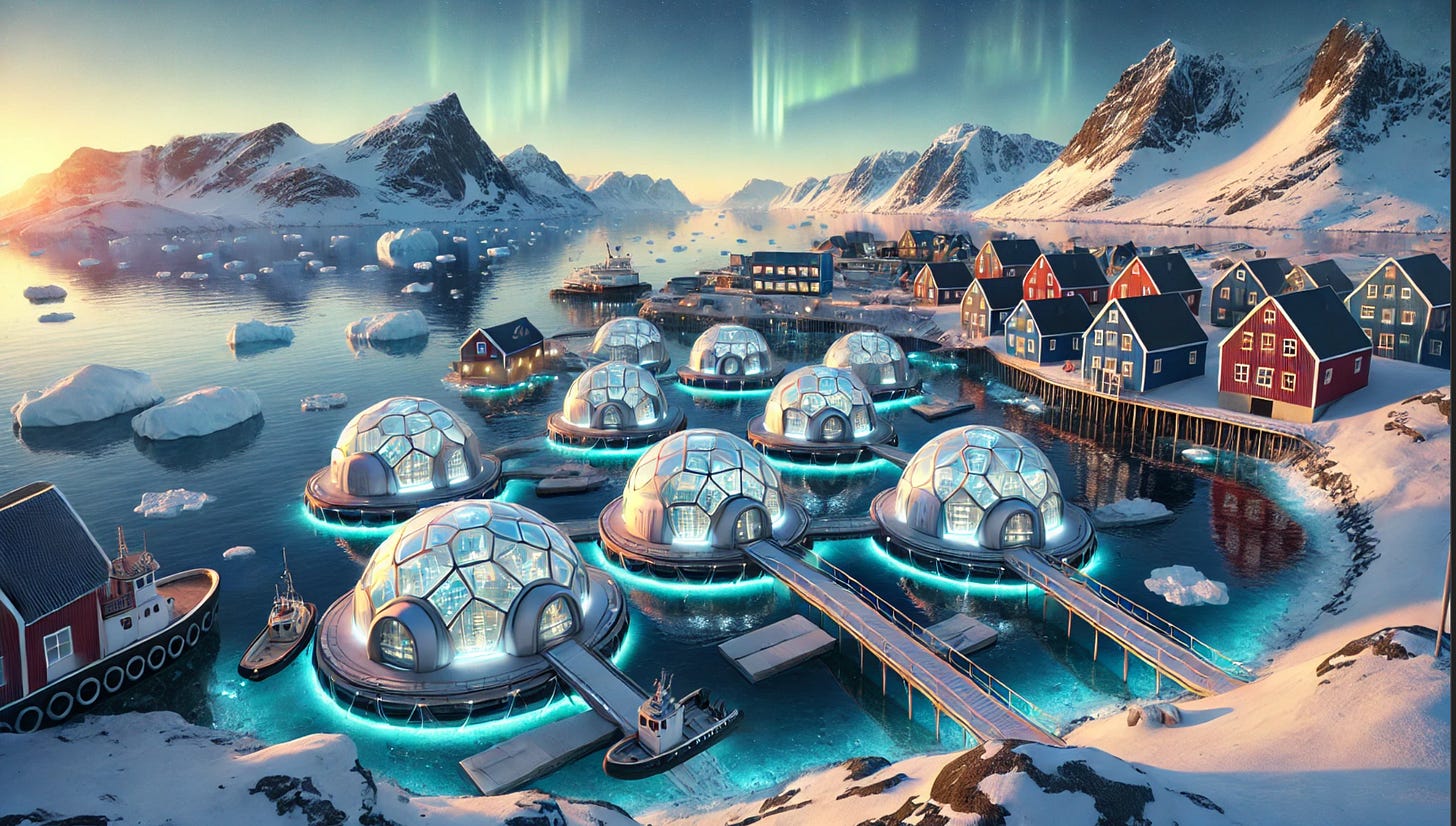



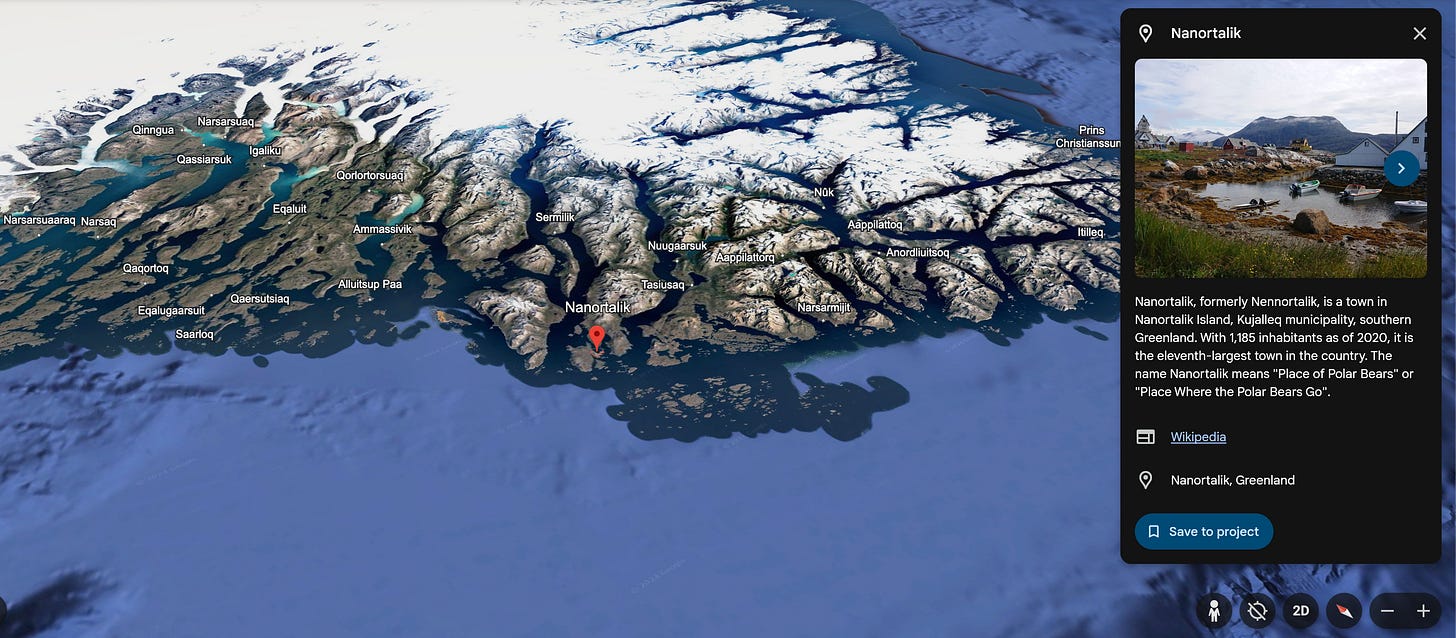

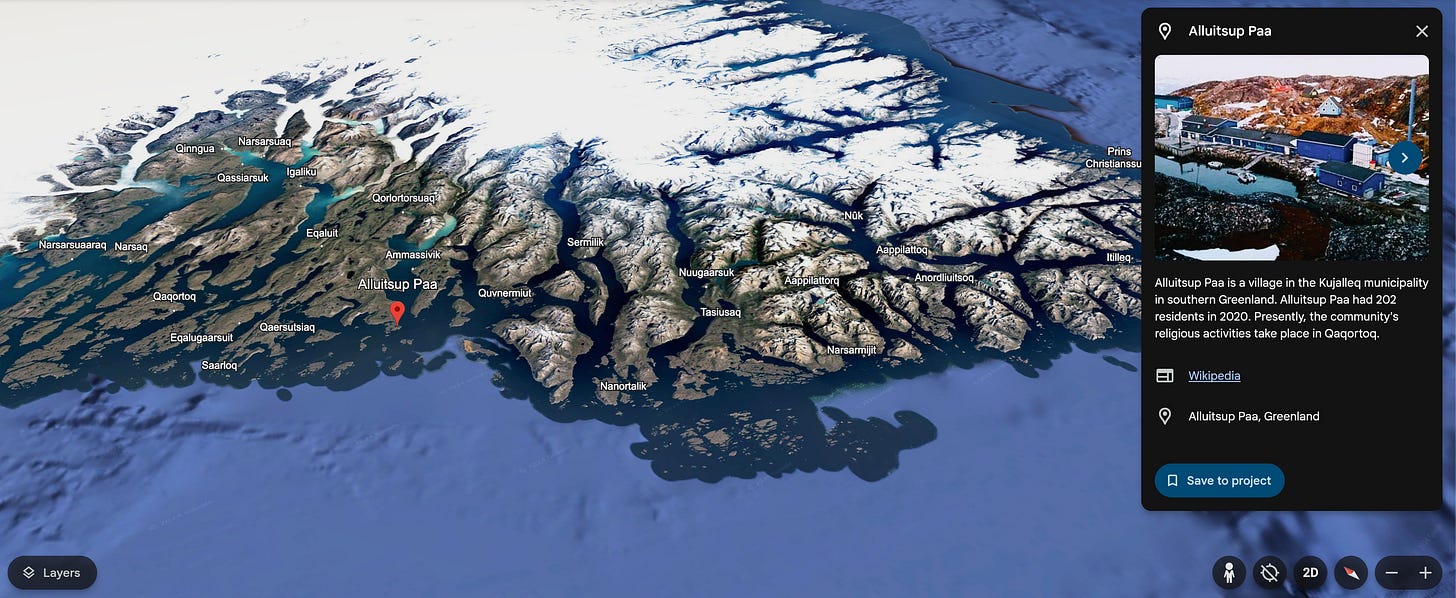

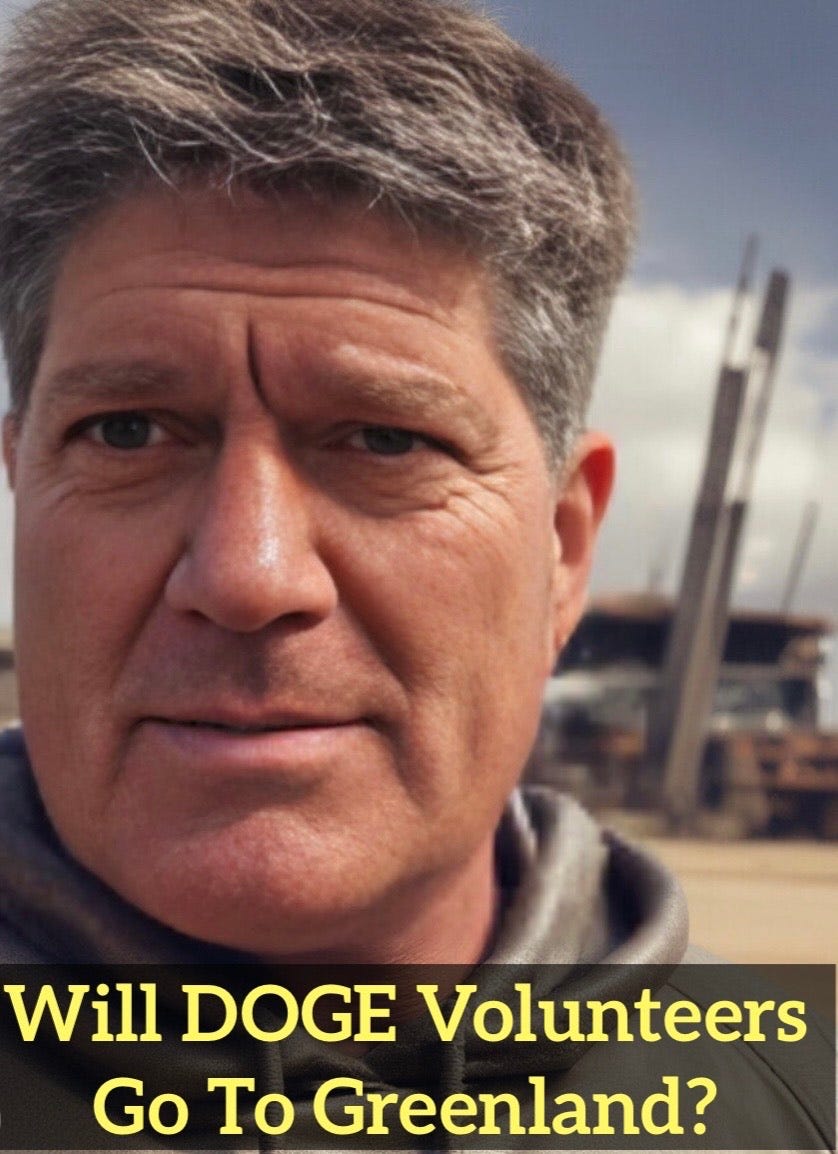



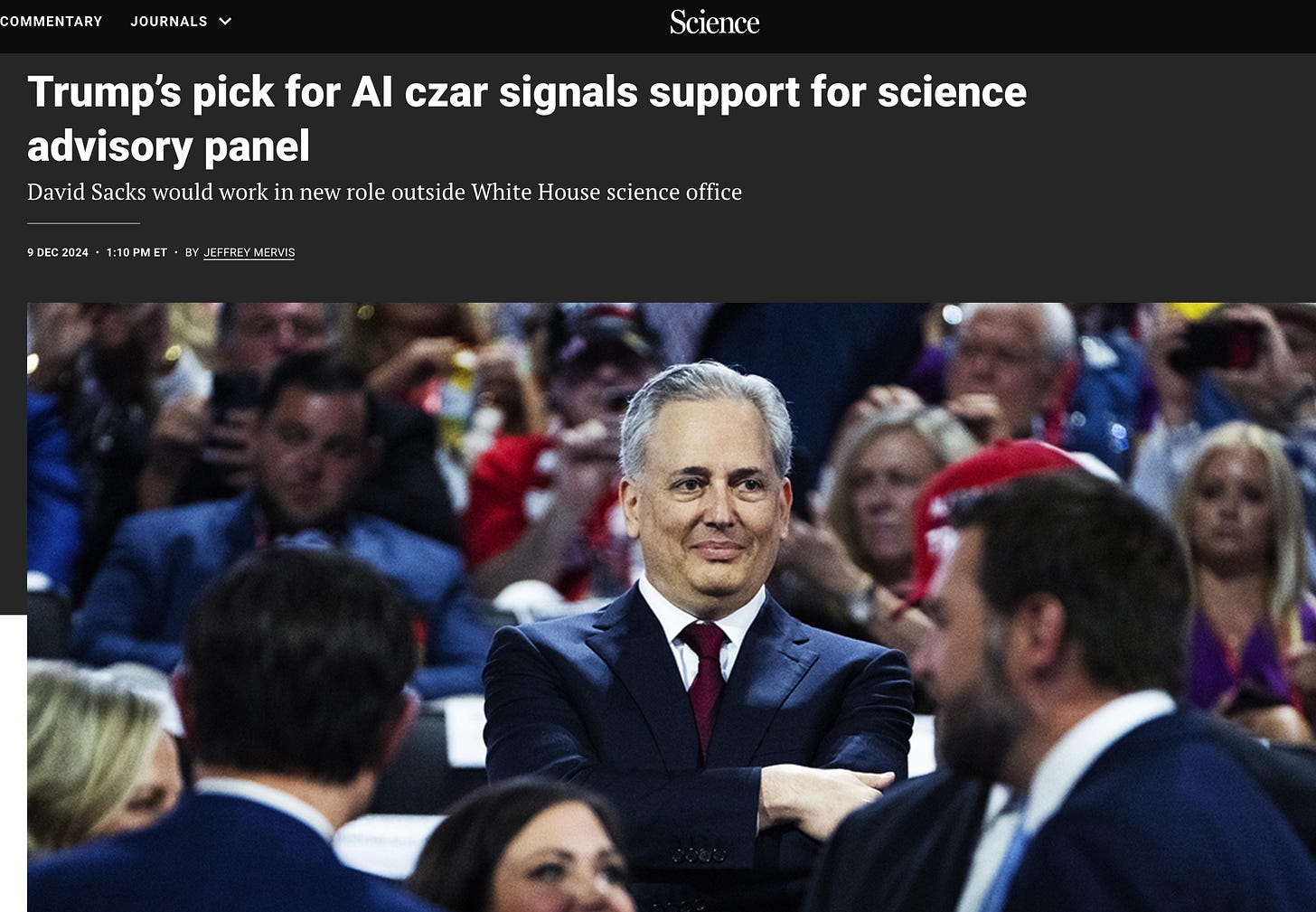

Yes, I originally proposed the Nevada desert that was already befouled with nuclear radiation at the Nevada Test Site. But I have also offered up the same plan for North Dakota and South Dakota. Free food and lodging for any homeless person in North Dakota from the "waste heat" the servers threw off could be easily arranged. Artificial light could power greenhouses for hydroponic plants. The Mall of America in Minnesota was built north of Fargo, a complete indoor world, over thirty years ago. Yes, get the homeless to warm cocoons in Fargo.
Does anyone mention that data centers for all their hype are the key to rushing in the Technocracy era we supposedly fear and don’t want?